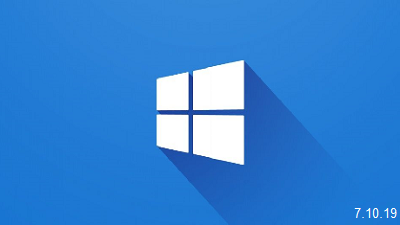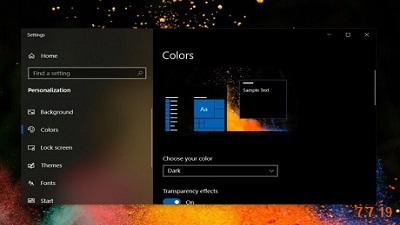|
Microsoft released quality improvements to the Windows 10 version 1903 servicing stack, the component designed to allow users to receive and install Windows updates. Microsoft says that this critical servicing stack update "addresses an issue with a Secure Boot feature update that may cause BitLocker to go into recovery mode because of a race condition." All Windows 10 users are advised to first update the servicing stack to the latest version before attempting to install the latest cumulative updates. Installing the servicing stack updates (SSU) issued by Redmond ensure that users' devices can receive and install Microsoft security fixes with the help of a reliable and robust servicing stack. In addition, customers are recommended to update the servicing stack to the latest version as soon as possible to avoid potential issues which could appear during the installation process of both feature and quality updates. As explained by Microsoft in the Windows IT Pro Center, the servicing stack update also "contains the 'component-based servicing stack' (CBS), which is a key underlying component for several elements of Windows deployment, such as DISM, SFC, changing Windows features or roles, and repairing components." The servicing stack update can be installed automatically via Windows Update or with the help of standalone update packages available for download from the Microsoft Update Catalog website. Windows Server users can use the Windows Server Update Services (WSUS) to mass deploy the update to all computers on a network. Microsoft still blocks some devices with compatibility issues from receiving and installing the Windows 10 May 2019 Update, to prevent incompatible machines from installing the update. Find installation instructions and lots more posted on OUR FORUM. TV show and movie fans are being targeted by a malicious campaign that distributes a GoBot2 backdoor variant via files downloaded from several South Korean and Chinese torrent sites. The malware dubbed GoBotKR by the ESET researchers who discovered it is being disseminated as part of a campaign started back in May 2018, with hundreds of samples having already been detected on the compromised computers of users from South Korea, China, and Taiwan. GoBotKR has been developed to specifically target South Korean fans and this is shown by the South Korea-specific evasion techniques added to the original GoBot2 backdoor. The GoLang-based GoBotKR backdoor is built by customizing the GoBot2 malware publicly available since March 2017 and the features added using GoLang libraries get executed on compromised computers with the help of legitimate Windows binaries and "third-party utilities such as BitTorrent and uTorrent clients." After infecting a victim's PC, the backdoor allows its operators to add the compromised machine to "a network of bots that can then be used to perform DDoS attacks of various kinds (e.g. SYN Flood, UDP Flood, or Slowloris)." To do that it starts by gathering and exfiltrating system information (e.g., network and OS version info, CPU and GPU versions, and installed anti-malware solutions) to its command-and-control (C2) servers, making it possible for the attackers to cherry-pick which of the bots can be used in future attacks, among a huge list of other capabilities from executing commands and scripts to running proxy/HTTP servers. For more visit OUR FORUM. A bug in Windows 10 May 2019 Update (version 1903) might be distorting graphics or representing color improperly on some monitors. If the graphics or images are distorted or messed up in some way on your device, it might be because of the Windows 10 version 1903 update. According to various reports, Windows 10 version 1903 has a compatibility issue with certain GPU where ICC profiles may not work properly for users. The result is poor image quality and abnormal gradient graphics with faint vertical lines at regular intervals. The bug also renders tones when a color profile is loaded, or when the Calibration Loader task is invoked. The color distortion issue has been confirmed by several Windows 10 users in Reddit and other forums, including Nvidia forums. In a support document, display and monitor manufacturer Eizo has confirmed that the bug is also hitting their displays and monitors after the May 2019 Update. The calibration device manufacturer DisplayCal has also confirmed the color distortion after Microsoft’s latest feature update. According to DisplayCal, Calibration loading may stop working in Windows 10 version 1903. The bug affects both the Windows-internal calibration loader and 3rd party calibration loaders. Fortunately, Microsoft appears to have deployed a fix with Windows 10 KB4501375 (Build 18362.207). Installing Windows 10 Build 18362.207 could help users resolve the color distortion problem. “Addresses an issue that may cause Night light, Color Management profiles, or gamma correction to stop working after shutting down a device,” the changelog reads. For tips on a possible workaround stop by OUR FORUM. |
Latest Articles
|


